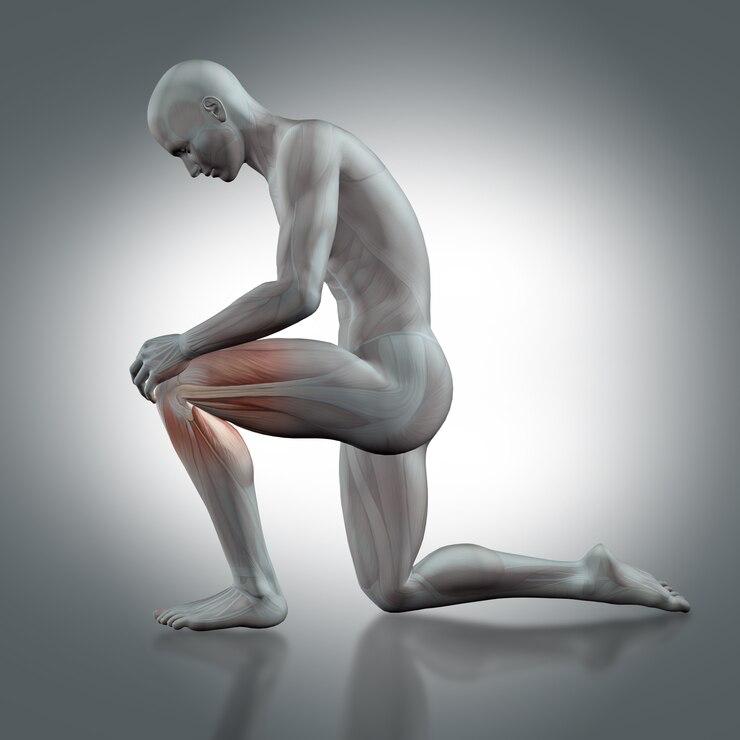Lastly, the ailment of sciatica pain is often experienced by countless individuals across the globe. Pain along the leg accompanies sciatica as a result of irritation of the nerves.
Learn about symptoms, causes, and effective relief strategies for lasting comfort.
What is Sciatica Pain?
Sciatica, due to the definition it possesses, cannot be termed as a condition of any sort. It is more like a symptom of a lot of other intricacies. Generally, sciatica or pain located in the region of the sciatic nerve, occurs whenever the nerve root is pinched or compressed. A herniated disc, for instance, may cause some compression or staking together interesting hernia spinal structures. A sufferer often experiences sharp pain, numbness, or tingling actions as well as the weakness in the affected leg. The pain could be severe enough to hinder even the simplest of daily tasks.
1. Stretching and Exercise
Targeted stretching and exercise are some of the highly recommended practices for easing sciatica pain, which is why they are discussed in great detail. Specific stretches during activities can help alleviate compression of the sciatic nerve and enhance movement.
Recommended Stretches:
Piriformis Stretch: The individual is required to lie on his back and cross one leg over the other leg. Draw that knee towards the opposite shoulder and maintain this position for about thirty seconds. Do the same procedure for the other side.
Knee to Chest Stretch: Begin by lying on your back then bring one knee to the chest while the opposite leg stays straight on the surface for a duration of 30 seconds.
Seated Spinal Twist:Spinal Twist in Sitting position is also referred to as Bharadvajasana pose. First, sit down on the ground with one leg stretched out and the other one brought back at the knee. Then, rotate your trunk in the direction of the bent leg and freeze there for thirty seconds. Repeat the motion on the other side.
The Necessity of Regular Exercise:
It is recommended to add some low resistance exercise programs such as brisk walking, swimming, or cycling, which may create an improvement in blood circulation and speed the recovery process. Centering is extremely useful in this – and lower back – muscle strength because it is helpful in giving support to the upper body and the spine better.
2. Modalities of Heat and Cold Application
Heat and cold applications as a technique for alleviating pain from sciatica is quite effective. Each method serves a different purpose and helps ease pain in different ways.
Cold Therapy:
Scientific evidence supports the application of cold packs to reduce inflammation and relieve sharp sciatica pain. Cold packs or frozen vegetables in a cloth can be used for 15-20 minutes.
Heat Therapy:
Heat helps ease tight muscles and stimulate blood circulation after the initial inflammation has receded. A heating pad or a warm bath may be used at this point to alleviate the discomfort. The application of heat and cold in turns gives the best results.
3. Physiotherapy
Engaging a physical therapist can help in developing specific exercise regimens and therapies that particularly concern your sciatic pain. A physical therapist will examine your condition then formulate a treatment plan that is customized for you.
Why do patients journey towards physical therapy practice?
Individualized Rehabilitation: Due to their unique characteristics, some exercises may focus on the back and legs strengthening that does not stress out the sciatic nerve.
Physical therapy: pain relief and healing movement of the affected areas through non-invasive methods: i.e. manipulation, use of heat and stimulation.
Health Education: The physical therapy specialist helps the client understand how posture and proper body structure can eliminate the chances of future occurrence of sciatica.
4. Pharmacotherapy
Individuals diagnosed with sciatica pain may also take oral medication that can help them manage the condition without a prescription. Non-steroidal anti-inflammatory medications such as naproxen and ibuprofen may be ordered to alleviate pain as well as help in controlling swelling.
When should you consider medication?
In case you don’t get any help from medicines like narcotics or do not get substances abused, you should see a medical specialist. He or she may prescribe a potent analgesic, a tranquilizer to relieve muscle cramps or pain relieving medicine to help combat the pain.
Notes on corticosteroids:
In some cases, corticosteroid injections may be recommended to reduce the inflammation around the sciatic nerve, providing temporary pain relief.
5. Complementary therapies
As with many conditions, sciatica also has its traditional treatment and its alternative one, the latter being reliable in even more symptomatic relief. These methods are often applied together with the traditional approaches in order to enhance the overall effectiveness of the treatment.
Acupuncture:
It is a traditional healing process of Chinese culture, done by inserting thin metallic needles into specific points within the human’s body. Most patients are accustomed to the procedure and seek it help especially when dealing with sciatica pain as it enhances healing and blood flow.
Chiropractic Therapy: Chiropractic treatment: This involves spinal manipulations that are designed to put the bones back in their position while relieving pressure on the sciatic nerve. The frequent attendance of a chiropractor for treatment may help enhance the health of the spine and help avoid any further episodes of injury.
Therapy Through Massage:
In recent years advanced ole massage therapy education has been able to cover a wide scope of treatment for various physical ailments including stress, emotional problems and even promoting overall wellness among individuals.
Conclusion
Sciatica has a way of compromising how one enjoys life. Relief, thankfully, comes in many forms. It is possible to manage your pain effectively by stretching and exercising, applying heat and cold therapies, going for physiotherapy, taking some medicines and even using some other therapies.
In case the sciatica pain does not subside or gets worse, a medical check-up should be sought together with the prescribed comprehensive care. Remember that the sooner the action is taken, the better the results and the quicker one is back to living without pain. This requires Additional efforts but it is possible to get a normal life above sciatica pain and even feel healthy.
What is the fastest way to treat sciatica?
Home Management
Ice. Following the onset of sciatica pain, the cold or ice packs may be useful in relieving the pain and swelling for the first few days. …
Heat. In the subsequent days of using cold or ice, one may switch to a heating pad or warm compress. …
Non-prescription medications. …
Stretching and Movement.
What methods help improve sciatica?
The majority of individuals will heal from the condition known as sciatica due to proper rest, change in way of doing things, and activity modulation to help the nerves heal. They will also help with pain medications, activity, and some form of physiotherapy. As the nerve may still be irritable, it is advisable to increase activity levels gradually with respect to exercise tolerance.
How to cure sciatica in 8 minutes?
Here are 12 effective tips that will relieve sciatica in 8 minutes (or even less). Take a break. A sciatica attack may occur if the person has been active, running or walking for long periods of time. … 1.5 cat cow pose. An Error has happened. … Bridge Technique. … Extremities lift in Dorsal Position. … Stretching the Piriformis Muscle. … Non-Tractional Work Out. … Use an Ice Pack. … Go for a swim.
Read more https://www.health.harvard.edu/pain/sciatica-home-remedies-and-self-care
Related
https://www.webmd.com/back-pain/sciatica-pain-relief-options
Related link
https://my.clevelandclinic.org/health/diseases/12792-sciatica

